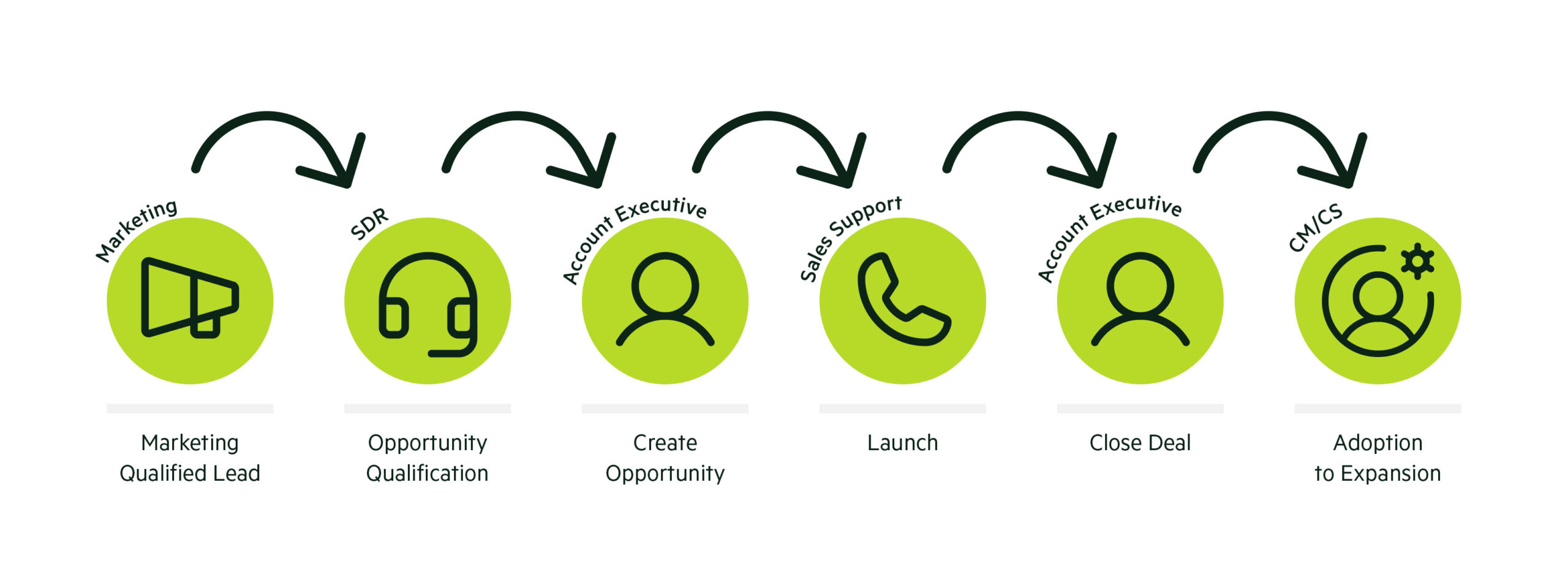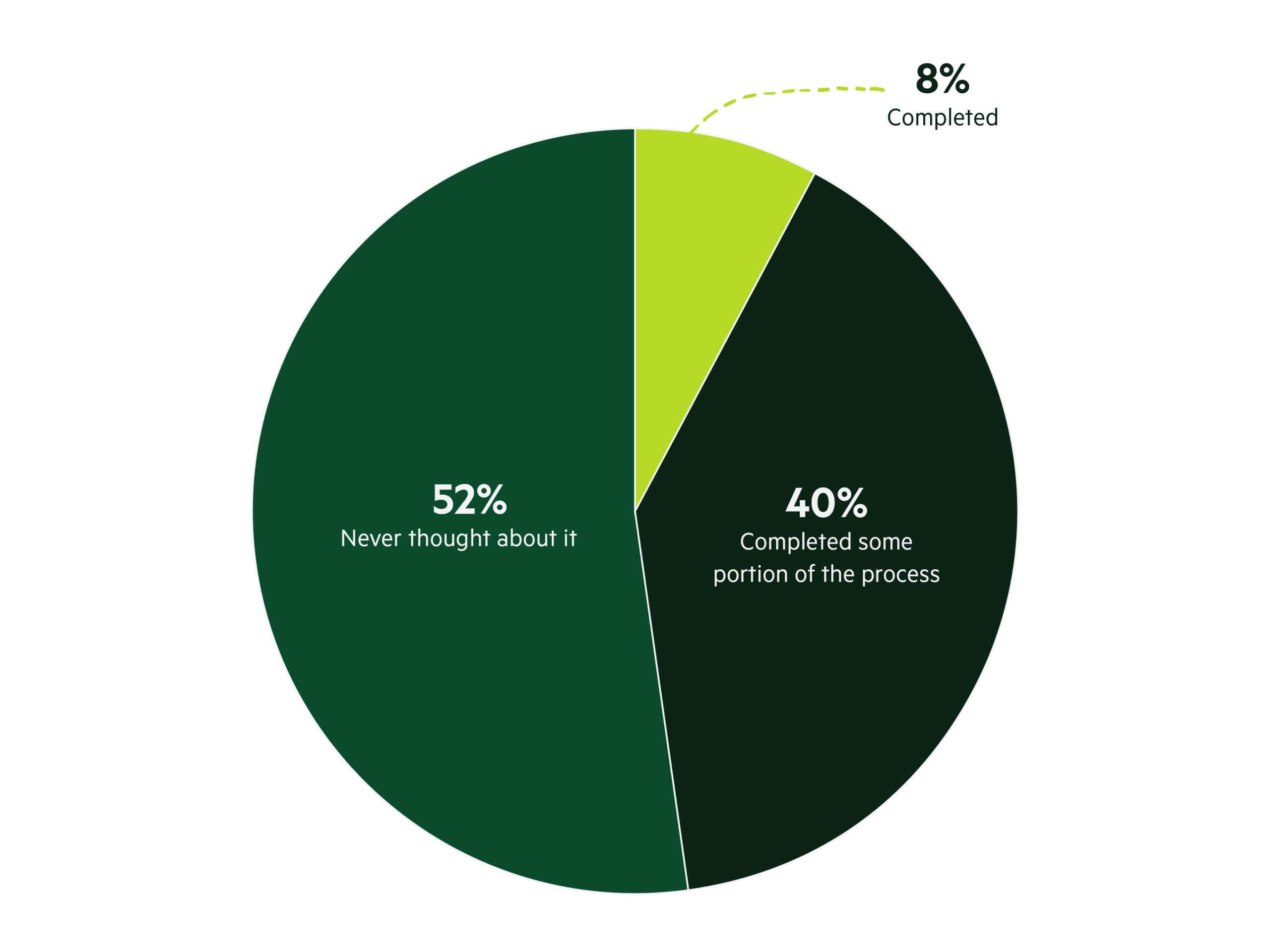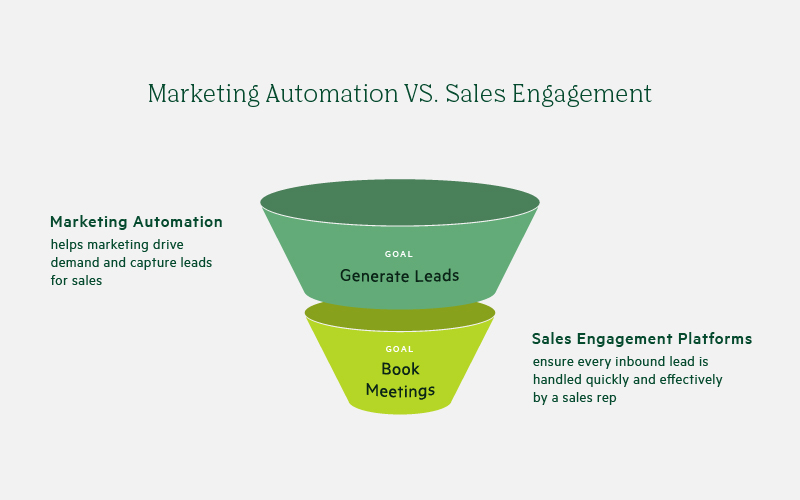Imagine 10,000 brand-new leads…were just lost, throughout the year. True story, I’ve seen it happen.
How? Potential sales opportunities were disappearing at almost every sales lead handoff point along the pipeline. Compounding this was low conversion rates, high acquisition costs, and at the end of the day, straight up lost revenue. Every. Single. Day.
If you think this is happening, even at a small scale at your organization, keep reading. In this article, I’ll point out some of the most common culprits of lost revenue.
To learn more, beyond what’s covered in this article, join my session at Saleslove‘22, where we will take it to the next level by talking about what you can do today to set your team up to exceed your revenue goals. During the session you will also hear from leaders at Cargill and SimilarWeb about how their teams actualized more revenue because they were able to gain the needed level of clarity about their Buyer Engagement Strategy.

What is a Lead Handoff?
Let’s level-set first. A sales lead handoff is the point at which a lead– whether a brand new prospect or an existing customer ripe for expansion – is transferred from one person on your team to another. Think marketing to sales development representative (SDR), SDR to account executive (AE), AE to account manager (AM), or AM to customer success manager (CSM).
The bigger your organization, or your average deal size, the more handoffs there are and the more important it is to get each one right. One messy handoff, or faulty step, and you’ve lost the deal before you can blink. Poof, another lead lost.

Five Red Flags That Can Signal Your Handoff Process is Flawed
It may surprise you that 10,000 leads could go missing without detection. But they don’t just vanish all at once. Technically, they’re still sitting in your CRM (lost in the never ending sea of contacts and leads and accounts that swirls about most CRMs). And I’m sure if you really thought about it you could start to estimate how many ‘go missing’ every month.
So what are some telltale signs you might be unintentionally losing leads as a result of not thinking through your entire buyer engagement strategy as a team?
If any of the following sound familiar, let the alarm bells commence!
🚩 #1 Your team thinks they know how your engagement process works. They assume that merely watching (or even moving) countless leads through the sales cycle means they know exactly what every other team needs for you all to succeed. Do they really know what the people to the right and left of them need? Or do they just have a general sense?
🚩 #2 Perceptions of the process are based on one point of view. Maybe you have an outstanding sales operations or enablement team or a strong sales leader with a clear vision of how things should work. But every team is different, and rallies around different goals, which can sometimes counteract each other. So without input from all stakeholders even the best vision, because it’s usually only a portion of the full picture, will fall flat. If you had to put pen to paper, would it be a complete picture? I’m guessing not. Don’t beat yourself up too much, but also know you can do better and realize more revenue if you do.
🚩 #3 Reps are complaining about getting bad leads. I have good news and bad news for you. The good news first: I can guarantee that if you took the time to review your lead management process, especially your scoring model alongside Sales, there are probably good leads going unnoticed. The bad news? Identifying these leads will take collaboration (aka time) across multiple stakeholders. But it will make a difference, so really this is just more good news instead of bad news if you’re willing to do the work.
🚩 #4 Your sales lead handoffs are mostly manual. No. Nope. Nuh-uh. With all the incredible technology available today, there’s absolutely no room for multiple manual handoffs in your process. With the correct level of understanding for what really needs to happen, automation ensures the lead, and pertinent information, get transferred ASAP. If there is a need for light human oversight, that is a-okay, because we luckily still provide value (for now, lol)!
🚩 #5 You’re finally investing in new sales technology but keeping the existing process. There’s a lot that goes into implementing new technology, so it is understandable you’d try and save time where you can. But, I’ve seen it happen all too often. The right teams are not involved in the strategic planning, the broken processes continue, team-based KPIs are not clearly mapped out, and leads continue to disappear. Instead, use the event of a new sales tech tool coming in as an opportunity (or excuse) to re-evaluate your processes to better align with your revenue goals.
If you nodded your head at one or more of these, there’s a strong chance you need a better understanding of how your entire team engages with prospects and customers.
Yes Buyer Journeys are Complex, BUT You Can Plan For Better Success
The buyer, and their complex experience during their buying journey, should be your sole focus. Once you have a clear picture of this, it’s time to create your strategy of how you can help (engage) them along the way. The bigger the purchase, the more buyers there are on both sides of the table, and the longer it will take to get a signed contract.
The best way to address this inevitable mess is by creating a Buyer Engagement Blueprint as a team. The key to this is doing it as a team, so you have everyone’s part identified. Wondering what that would eventually look like? Come to my session at Saleslove’22 to see a few examples and get a template to create your own.
When creating a blueprint, you are forced to take the time to explore all the possible stops the buyers might take along the way. From there, you can determine the best engagement strategy: who needs to reach out when, plus how and where seamless handoffs need to occur.
Not to pile on more, but this will also greatly increase your ability to measure the success of the process and identify places ripe for improvement to shorten the sales cycle.
Estimate of Companies Using Buyer Engagement Blueprints as Their North Star

After years of consulting with countless organizations, I’d estimate the majority of companies have never even thought about all the various stops along a buyer’s engagement journey. Especially not at a holistic and in-depth level. Those that have greatly decrease the chance of leaving money on the table. Because they’re strategic about who they engage with, how they do it (collectively), and can identify the best-in-class sales motions quicker for scenarios like prospecting, beginning renewal discussions early, and transitioning conversations from person to person.
The Secret to Seamless Handoffs Between Marketing and Sales
That 8% of best-in-class organizations that take the time to come together as a team to visualize a completely developed Buyer Engagement Blueprint have another success secret: they find ways to automate almost every part of their process.
Once the marketing team has attracted prospects and identified the ones who are showing purchasing intent, the leads are ready to be passed to the SDR as a marketing qualified lead (MQL).

For a seamless sales lead handoff, the SDR should add the prospect to a cadence; which tees up an automated series of emails, phone calls, and social media steps, managed by the SDR, to quickly gain a positive response. If qualification happens, the SDR creates an opportunity (sales qualified lead or SQL), which triggers an automation rule within the sales engagement platform to add the prospect to a sales-run cadence.
Pro Tip: Using a cadence at every handoff maintains ongoing communication with the prospect.
The key to a successful SDR to AE handoff is the transfer of information, which is seamless when everything is automatically logged in the sales engagement platform. Call recordings and transcripts, tech stack data, organizational charts, and more ensures the AE has all the information needed to continue the conversation – without buyers repeating themselves.
As the AE moves the opportunity forward, deal information is maintained in the same place to simplify all the internal handoffs. As the number of people involved from the seller’s organization continues to grow, there are more handoffs than ever – from sales engineers to information security. It’s the AE’s responsibility to keep their team as focused on the deal as they are.
Replicating the Success with the Sales to Service Handoff
The post-sales handoff process is very similar – and just as critical – as the marketing to sales handoff. A bad handoff at this point could be very damaging to the relationship with the customer and ultimately impact adoption and retention.
Again, automation and multi-channel communication pave the way for a smooth transition. An automation rule within the sales engagement platform prompts a cadence by the customer success or implementation team so there’s no lapse in communication as the points of contact change.
Pro Tip: Automated conversation recordings, activity tracking, and deal details pave the way for a successful customer relationship.
With all information about a deal in the sales engagement platform, the service teams know the new customer’s goals, pain points they will be solving for, and preferred communication style so they can avoid common pitfalls.
Achieve Seamless Sales Lead Handoffs
Technology and automation alone will only get an organization so far. Seamless handoffs can happen every time when the Buyer Engagement Strategy is clear to all involved and the process is pre-set in the sales engagement platform.
My team is focused on helping organizations build that strategic foundation so they can leverage tools like Salesloft to their fullest potential. It’s what we do everyday and we’d love to help your team as well. Reach out to the strategy consulting team.


